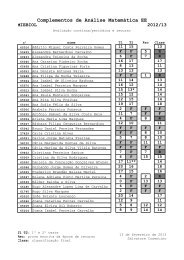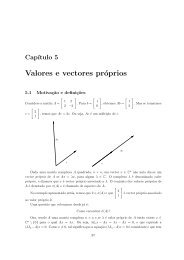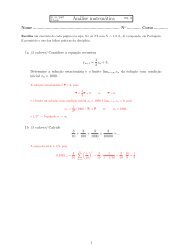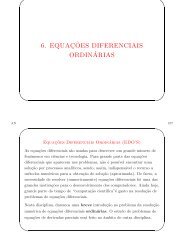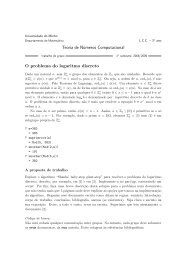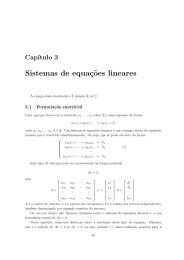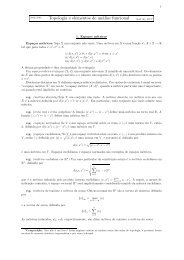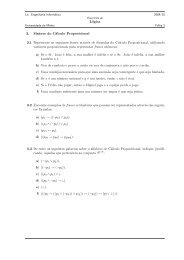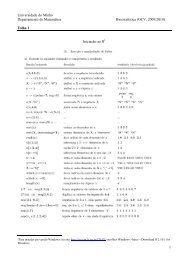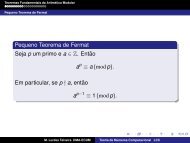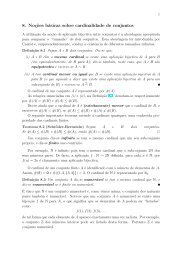My title - Departamento de Matemática da Universidade do Minho
My title - Departamento de Matemática da Universidade do Minho
My title - Departamento de Matemática da Universidade do Minho
You also want an ePaper? Increase the reach of your titles
YUMPU automatically turns print PDFs into web optimized ePapers that Google loves.
7 OSCILLATIONS AND CYCLES 52<br />
Dumped oscillations.<br />
Adding friction to an harmonic oscillator we get<br />
¨q = −2α ˙q − ω 2 q ,<br />
where α > 0 is some friction coefficient. The guess q(t) = e −αt y(t) gives ÿ = δy where the<br />
“discriminant” is δ = ω 2 − α. Find the general solution, draw pictures and discuss the cases<br />
α 2 < ω 2 (un<strong>de</strong>r-critical <strong>da</strong>mping), α 2 = ω 2 (critical <strong>da</strong>mping), and α 2 > ω 2 (overcritical <strong>da</strong>mping).<br />
Show that the energy<br />
<strong>de</strong>creases with time outsi<strong>de</strong> equilibrium points.<br />
E(q, ˙q) = 1 2 ˙q2 + 1 2 ω2 q 2<br />
Un<strong>de</strong>r<strong>da</strong>mped, critical and over<strong>da</strong>mped oscillations (phase portrait and time series).<br />
7.2 Mathematical pendulum and Jacobi’s elliptic integrals<br />
Mathematical pendulum.<br />
The Newton equation<br />
I ¨θ = −mgl sin θ<br />
mo<strong>de</strong>ls the motion of an i<strong>de</strong>alized pendulum (meaning a point mass attached to a wire of negligible<br />
weight, un<strong>de</strong>r a constant gravitational force) with mass m and length l, where I = ml 2 is the<br />
moment of inertia, g is the gravitational acceleration (near the Earth’s surface), and θ is the angle<br />
of the wire with the origin θ = 0 located at the stable equilibrium point. Observe that in the limit<br />
of small oscillations we could safely replace sin θ ≃ θ and we are back to the harmonic oscillator.<br />
The energy<br />
E = 1 2 ˙θ 2 − mgl cos θ<br />
is a constant of the motion. We can <strong>de</strong>fine the resonant frequency ω = √ mgl/I and write the<br />
equation as<br />
¨θ = −ω 2 sin θ<br />
To simplify thinks, let’s take ω = 1. Solving form ˙q 2 the we see that the motion with energy E is<br />
given implicitly by the “elliptic integral”<br />
∫<br />
dθ<br />
t = √<br />
2(E − cos(θ))



